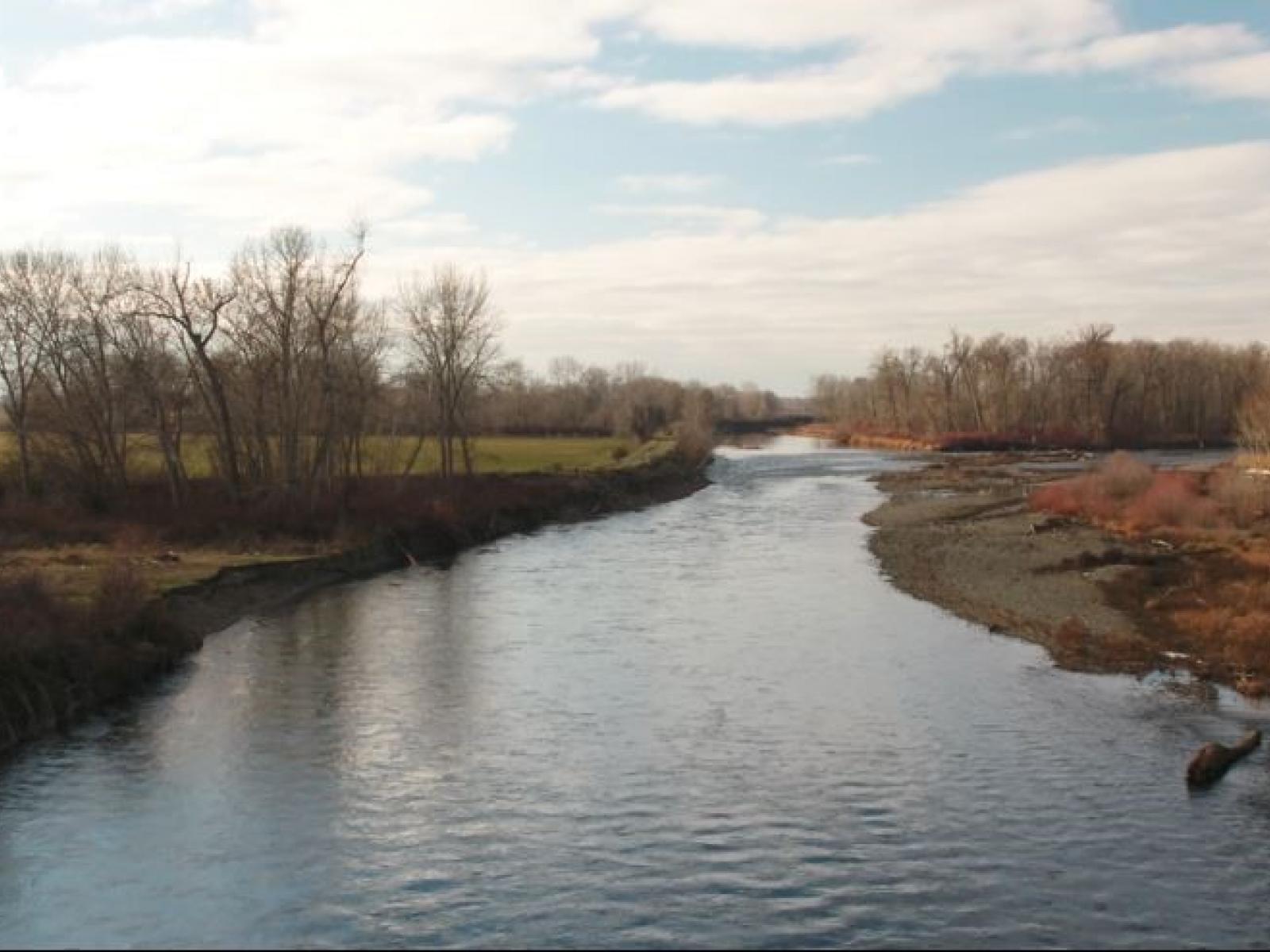The River Runs Over, Around, and Through it: Accounting for Intensive Water Resource Management in a Semiarid Watershed
Integrated hydrological modeling of the Yakima River Basin

Simulations of the Yakima River Basin in eastern Washington State using an integrated modeling system combining watershed hydrology and reservoir operations have reproduced measured streamflow much better than models with a less-detailed representation of reservoir operations. Additional research on issues such as groundwater withdrawal rates, irrigation efficiencies, and return flows could further enhance understanding and simulations of water cycling in intensively managed watersheds.
The Science
Increasing demands on irrigation, electric power production, and municipal water consumption are creating challenges for water resource management in many river basins. Researchers at the U.S. Department of Energy’s Pacific Northwest National Laboratory and Washington State University integrated a watershed hydrological model with a model of reservoir operations to study the influence of cropland irrigation and reservoir operations on water resources and water cycling in the Yakima River Basin in Washington State. The results show that irrigation nearly doubles evapotranspiration in the basin, reducing net downstream river flows.
The Impact
The Yakima River Basin, like many arid and semiarid watersheds around the world, is experiencing water management challenges due to increasing human appropriations combined with the need to maintain critical environmental flows. The results of the study clearly demonstrate that reservoir impoundments and crop irrigation can significantly modify water availability, especially in intensively managed watersheds. The techniques used in the study are based on widely available community models and could be used to improve water resource analyses in other watersheds.
Summary
Water management activities substantially alter the terrestrial water cycle by modifying retention times and water exchanges across a watershed. It is important to account for these effects in intensively managed watersheds, especially in arid and semiarid regions where in-stream flows are critical for a wide range of human and natural systems. This research combines the Soil and Water Assessment Tool (SWAT) watershed model, which includes a detailed representation of agricultural irrigation, with RiverWare, a river flow simulation model that accounts for reservoir storage and releases. In simulations of the Yakima River Basin, a semiarid watershed in eastern Washington State, the integrated SWAT-RiverWare model was able to reproduce measured streamflow much better than the default SWAT model (which includes a much less detailed representation of reservoir operations). In addition to better representing the influence of reservoirs on seasonal flow patterns, the simulations suggest that irrigation reduces total streamflow by enhancing water loss through evapotranspiration. These results were somewhat sensitive to assumptions about groundwater withdrawal rates, irrigation efficiencies, and return flows, suggesting that additional research on these issues could further enhance understanding and simulations of water cycling in intensively managed watersheds.
PI Contact
Maoyi Huang
PNNL
Maoyi.Huang@pnnl.gov
Ian Kraucunas
PNNL
Ian.Kraucunas@pnnl.gov
Funding
This research was supported by the U.S. Department of Energy Office of Science, as part of research in the Multisector Dynamics, Earth and Environmental Systems Modeling program, and by the National Science Foundation and the United States Department of Agriculture.
Revised: October 18, 2019 | Published: March 15, 2019
Publication
Qiu J, Q Yang, X Zhang, M Huang, JC Adam, and K Malek. 2019. “Implications of water management representations for watershed hydrologic modeling in the Yakima River basin.” Hydrol. Earth Syst. Sci., 23:35–49.
[DOI: 10.5194/hess-23-35-2019].